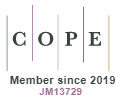Dubai: Changing Forms With Demography
DOI:
https://doi.org/10.15415/cs.2020.72010Keywords:
Dubai, Buildings, Sustainable, Architecture, TransformationAbstract
Dubai is a living example of how people play an important role in moulding the shape of a city. It started off as a small settlement in the deserts of the Middle East along a natural creek. The old city is a testament of how the natural growth led to the birth to the vernacular architecture of the region to combat its extreme climate. From a group of fishing villages, Dubai went on to become a hub for global business. It has eventually weaved itself from its people, their culture, traditions, social norms, etc. Its architecture of has undergone dynamic transformation with amazing innovation over the recent decades. Dubai has paced faster than any other city on earth and grew into eminence over a few decades. Built on the Arabian deserts with scarce resources like water, food, building materials, etc, Dubai is now one of the greatest cities in the world. With global warming being a major concern, the world is moving towards a holistic approach of sustainable living. The city has always exhibited its feat of excellence, and is now aimed at becoming the most sustainable city. This paper is an effort to study the architectural styles of the past, their sustainability and how it has evolved though these years. The study is a summary of the vernacular architecture processes that allowed its occupants a comfortable indoor environment in the hot desert conditions.
Downloads
References
Abdelmonem, M. G., & Loehlein, G. (2007). Sustainability in Traditional Houses in the UAE: Potentials and improvement of buildings abilities. The Second International conference of Dubai Conservation.
Belleza, I. E. (2010). Burj Khalifa: Towering challenge for builders. Retrieved 11 25, 2018, from Gulf News: www.gulfnews.com.
Burj Khalifa. (n.d.). Retrieved 11 25, 2018, from www.burjkhalifa.ae.
Dubai Statistical Center. (2018). Number of Population Estimated by Nationality. Dubai Statistical Center.
Dubai Statistical Center. (2018). Population by gender. Dubai Statistical Center.
Dubai Statistics Center. (2018). Population by Gender and Age Groups. Dubai Statistics Center.
Gaikwad, R. (2013). 10 Interesting Facts About Dubai History. Retrieved 12 20, 2018, from Raynatours:blog.raynatours.com.
Government of Dubai. (2016). A Sustainable Dubai The Dubai Municipality Report.
Hawker, R. W. (2002). “Where’s the air conditioning switch?”: Identifying problems for sustaining local architectural traditions in the contemporary United Arab Emirates’. In C. A. Brebbia, J. F. Martin- Duque, & L. C. Wadhwa, The Sustainable City II (pp. 449-464).
Nassar, A. K., Blackburn, G. A., & Whyatt, D. (2014). Developing the desert: the pace and process of urban growth in Dubai. Computers, Environment and Urban Systems, 45, 50-62. https://doi.org/10.1016/j.compenvurbsys.2014.02.005
Pacione, M. (2005). City profile Dubai. Cities, 22(3), 255–265. https://doi.org/10.1016/j.cities.2005.02.001
The official portal of Dubai government. (n.d.). Retrieved 09 10, 2019, from www.dubai.ae.
Tristam, P. (2019). United Arab Emirates History and Independence. Retrieved 11 12, 2018, from Thought Co.: www.thoughtco.compaper.
Downloads
Published
Issue
Section
License
Articles in the Journal of Creative Space (Creat. Sp.) by Chitkara University Publications are Open Access articles that are published with licensed under a Creative Commons Attribution- CC-BY 4.0 International License. Based on a work at https://cs.chitkara.edu.in. This license permits one to use, remix, tweak and reproduction in any medium, even commercially provided one give credit for the original creation.
View Legal Code of the above-mentioned license, https://creativecommons.org/licenses/by/4.0/legalcode
View Licence Deed here https://creativecommons.org/licenses/by/4.0/
 |
Journal of Creative Space by Chitkara University Publications is licensed under a Creative Commons Attribution 4.0 International License. Based on a work at https://cs.chitkara.edu.in/ |







